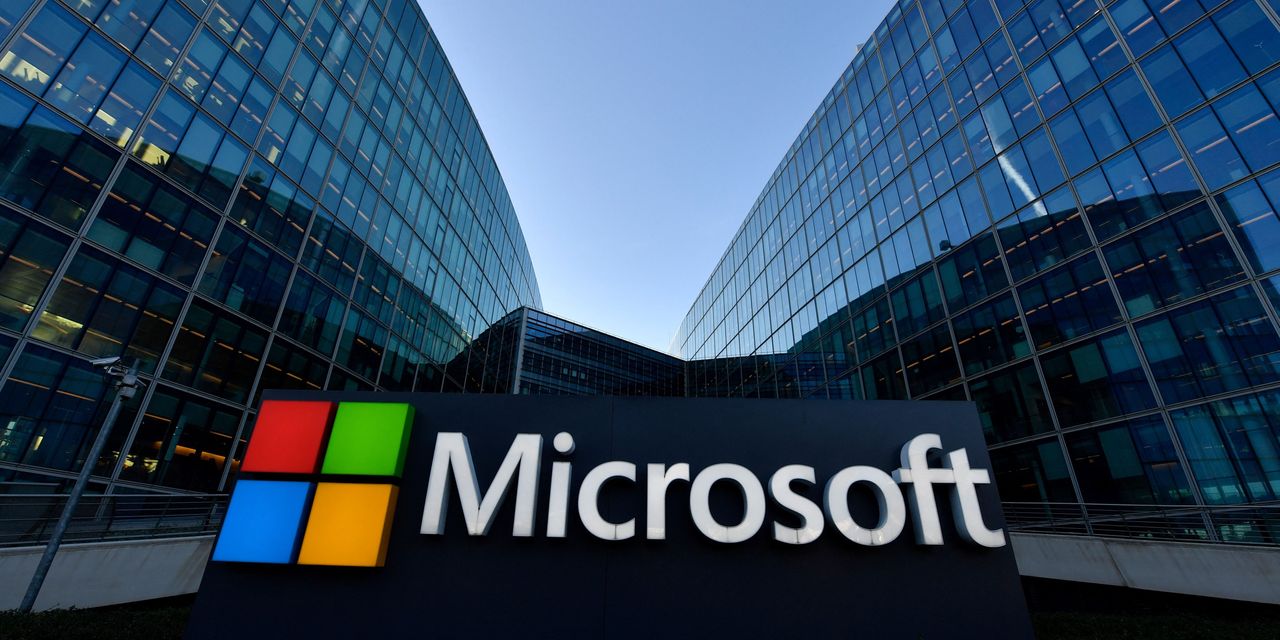The
Nasdaq Composite
has soared this year, while the
Dow Jones Industrial Average
has been almost flat. Watch for that trend to reverse—at least for a little while.
The tech- and biotech-heavy Nasdaq is up around 23% for the year. Tech stocks have gained partly on optimism over more opportunity for artificial intelligence.
Microsoft
(MSFT), for example, recently reported strong earnings and guidance, and the software giant is expected to benefit from ChatGPT. Another driver of tech gains is a drop in the yields of long-dated bonds this year. That makes future cash profits more valuable—and much of Big Tech is valued on the basis that a bulk of its profits will come years in the future.
The lower yields—caused by moderating inflation—is consistent with a poorly performing Dow. The index is up just under 1% this year, and it’s slightly lower in the past month. Moderating inflation is indicative of less economic demand, which doesn’t benefit mature companies that have seen their earnings growth already peak. The Dow has tenured tech giants Microsoft,
Apple
(AAPL), and Intel (INTC) that have rallied this year, but it also includes retailers and Dow laggards such as
Walgreens Boots Alliance
(WBA) and
Home Depot
(HD).
Higher interest rates overall—starting before the Federal Reserve’s hikes early last year—are pressuring demand for loans and therefore spending. Recent banking turmoil are putting additional strain on the economy.
Overall, the 2023 year-to-date gains for the Nasdaq had beaten the Dow’s rise by about 21.1 percentage points through May 22, a record since at least 1972, according to Dow Jones Market data. The previous equivalent record for the Nasdaq’s outperformance was 19.8 percentage points in 1991.
The tech vs. Dow trade likely has to take a breather soon, and a key factor could drive that. The Fed is expected to pause rate hikes, which will eventually support demand and further tame inflation. That would bolster the Dow. Meanwhile, tech gains could moderate in the short term from the recent run.
“The growth trade has gotten crowded which complicates the outlook for the growth trade a bit in our minds,” wrote Lori Calvasina, chief U.S. equity strategist of RBC.
This just means that this degree of tech outperformance can’t continue forever, even if tech eventually proves a superior investment over the longer term.
Write to Jacob Sonenshine at [email protected]
Read the full article here













